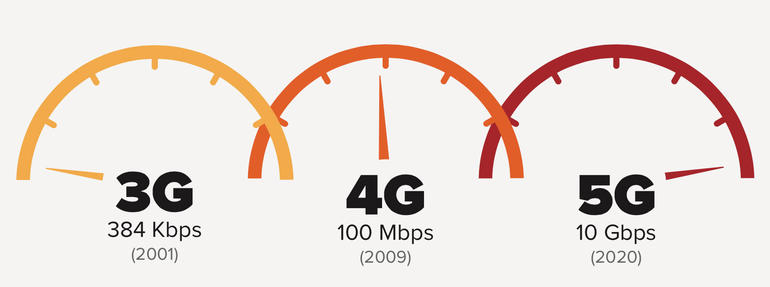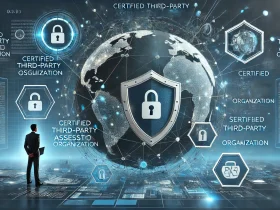About 5G Technology
Introduction
From the first phone to 4G networks, mobile communication has changed a lot in a few decades. We are now in the fourth generation “G”, and we are already seeing the first stirrings of 5G networks, which promise speeds from 100 to 1000 times faster than 4G. This means that soon we can download an entire movie in just a few seconds and, more importantly, that our devices will be even more efficient.
First you need to understand that networks 5G are still very immature, and that the authorities have not yet set any standards about it. The US Federal Communications Commission (FCC) in fact has just begun to consider the high frequencies that will be used by the next generation of technology.
Today the acronym 5G is more of a reflection of the ideas and hopes that governments and companies around the world. We are witnessing a process that is repeated approximately every ten years, and now we should not be blinded by the bombastic statements. We are still in an extremely bleak, but after interviewing several experts in the field, however, we made a pretty good idea of what to expect.
What is 5G?
5G is the term for “fifth generation”, and generation refers to the set of requirements for devices and networks that determine the compatibility with a certain standard. It describes the technologies needed to run some type of communication.
Networks of second generation (2G) were born in 1991 as a set of standards that governed the mobile, with no particular concerns about the data transmission. By the third generation, 3G, it focused on the voice but also on mobile internet, video calls and Mobile TV. The 4G was designed to improve aspects such as telephony over IP (VoIP), video conferencing and cloud computing, as well as on video streaming and online gaming.
With 5G networks “can download an entire movie in just a few seconds,” said Ted Rapp port, director of the research center NYU Wireless (Polytechnic School of Engineering, University of New York). According to Rapp port’s fifth generation could be up to 1000 times faster than 4G . In fact we can see speed of “10 gigabits per second or even more, with one or even several hundreds of Mbps on the edge of the cell,” said Rapp port.
Without us taking too much emotion, but remember that even before there was talk of 4G LTE speeds up to 300 Mbps, but today the actual speeds do not even come close, with 12.05 Mbps download and 2.5 Mbps upload on average. According to Paul Carter, CEO of Global Wireless Solutions (company involved to test network performance for operators around the world), the actual speed LTE hovering between 5 and 8 Mbps in a city . In tests of 2014, however, several operators, also in Italy, were able to reach a top speed of 30 Mbps. Indeed we arrived even later, but tests and actual performance are not the same thing .
In addition to increased speed and throughput, however, with the 5G they will reach even more efficient communications between different devices , as explained Asha Keddy – vice president of Intel’s division “standards and advanced technology.” For example, a smart home (smart home) with many sensors connected 5G would not need a large throughput to send data across the world, but certainly of much reduced response times. The devices 5G may identify and exploit the right frequency for each type of message, thus making more efficient communication.
So there are two different spirits that animate the development of 5G : on one hand the aim is to “simple” performance boost, and the other to a wider “iperconnessione” that sees a global connection of billions of people and devices (Internet of Things).
We all like to have networks faster and faster, but it is perhaps the second is more interesting: how Internet.org organizations and others are always looking for tools to make related to the many people who today are excluded from the online life , and certainly could exploit 5G networks – more flexible and less costly in theory.
How will the 5G?
Three words: extremely high frequency, or mill metric waves, namely radio waves between 30 and 300 GHz , the frequency band as high as possible. The use of this spectrum is not yet regulated (will be) and can potentially dramatically improve both the speed as the actual transmission capacity (throughput).
Think of the frequency spectra to be used as a container triangular partially filled with water. Modern telecommunications today use low frequencies, near the base of the container. There is virtually no traffic (water) above 24 GHz nowadays, because those waves are very small and tend to work over short distances. Take, for example connections 4G LTE.
Recent developments, however, are changing the landscape, as shown, for example, a study published in May 2013 by researchers at NYU (New York University) of IEEE Access, which explains how to use the millimeter wave transmission long range . Subsequently, in October 2014, Samsung proved to be able to get to 7.5 Gbps using a network at 28 GHz – numbers that translate into 940 MB downloaded in just one second, although of course in ideal conditions.
Once it is clear that the way of high frequencies is feasible and approved by the authorities, the industry can and will begin to develop specific components such as radio modules and processors needed to exploit the new networks. This however is only one of the open questions and by itself is not conclusive. Whilst it may be that networks are born with very high frequency, then there is the problem of bring benefits to the people and end devices.








Leave a Reply